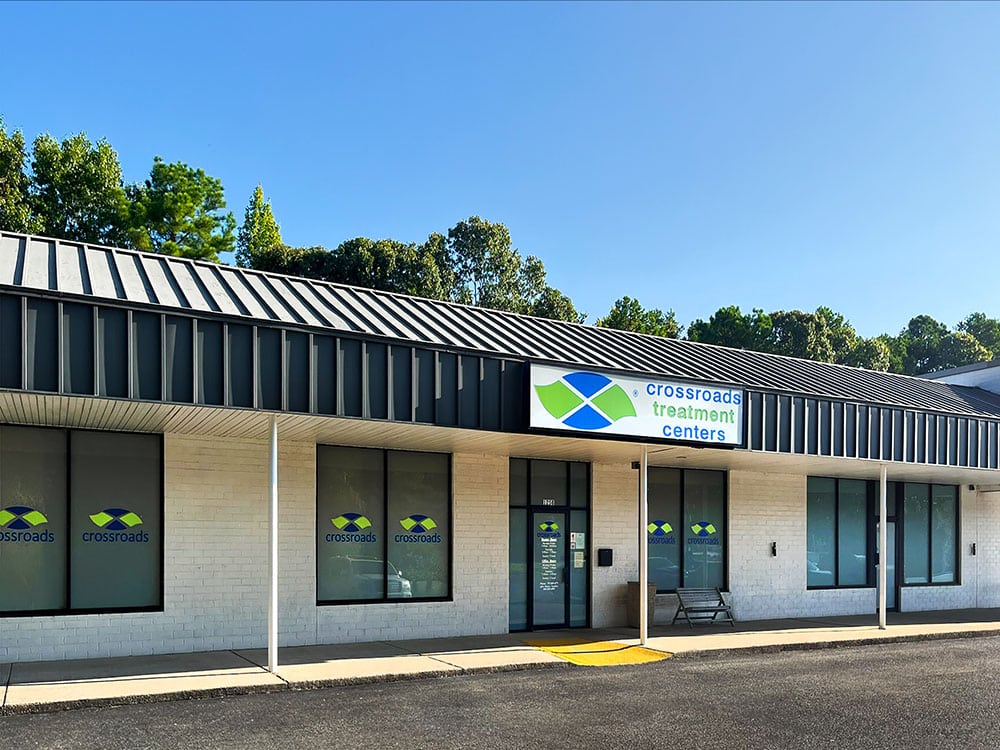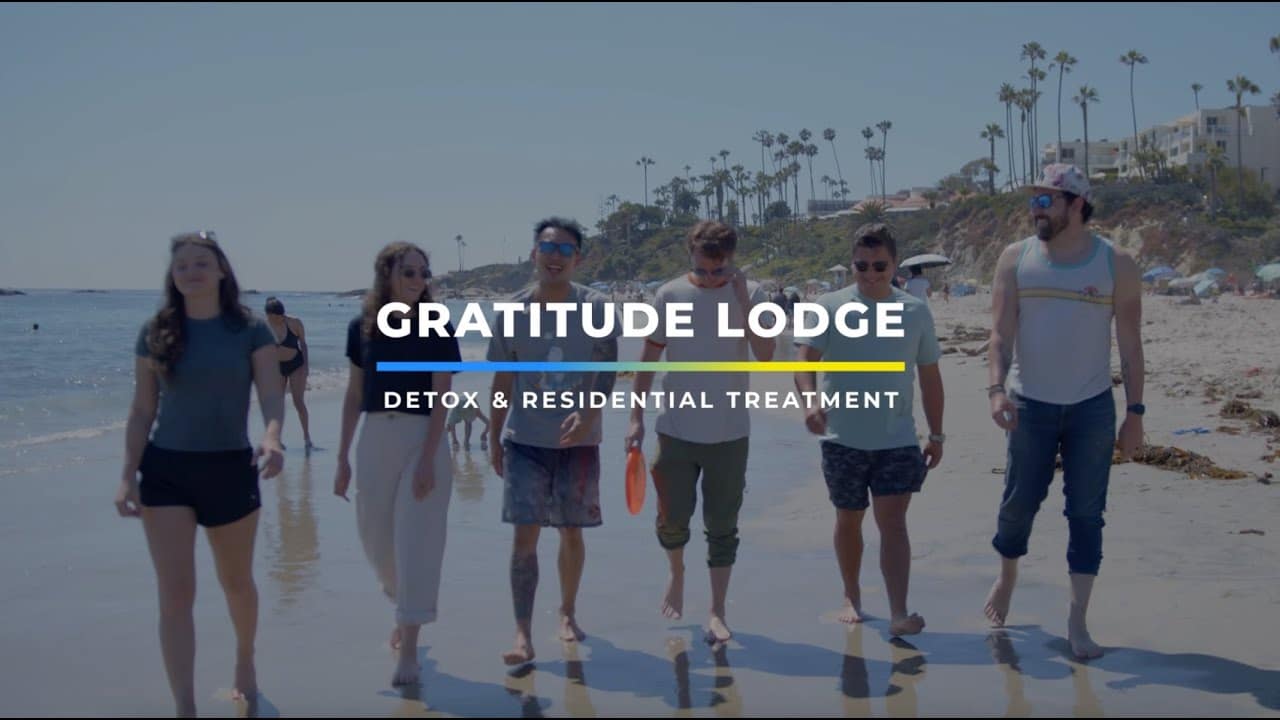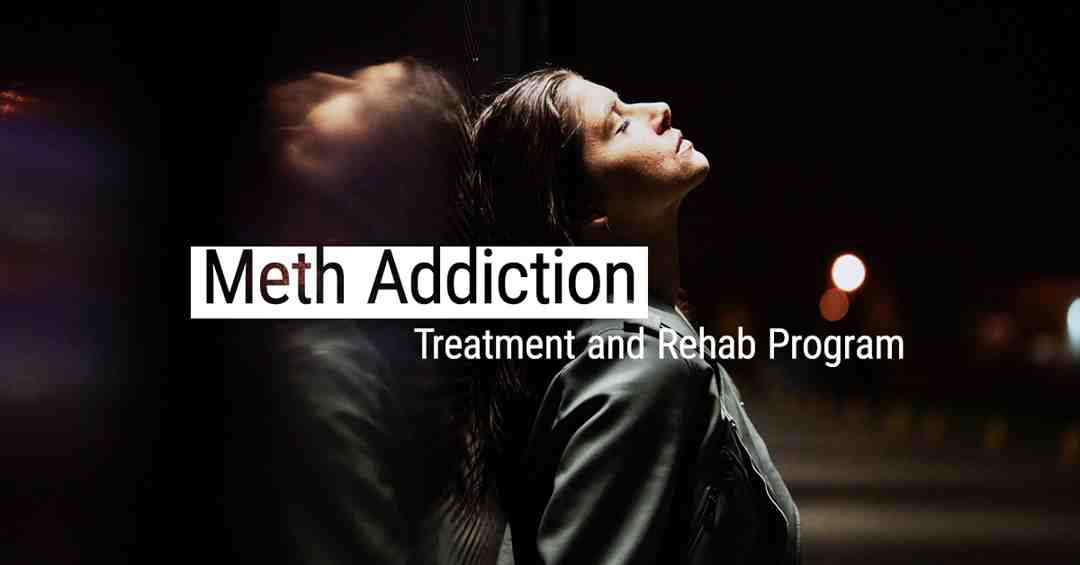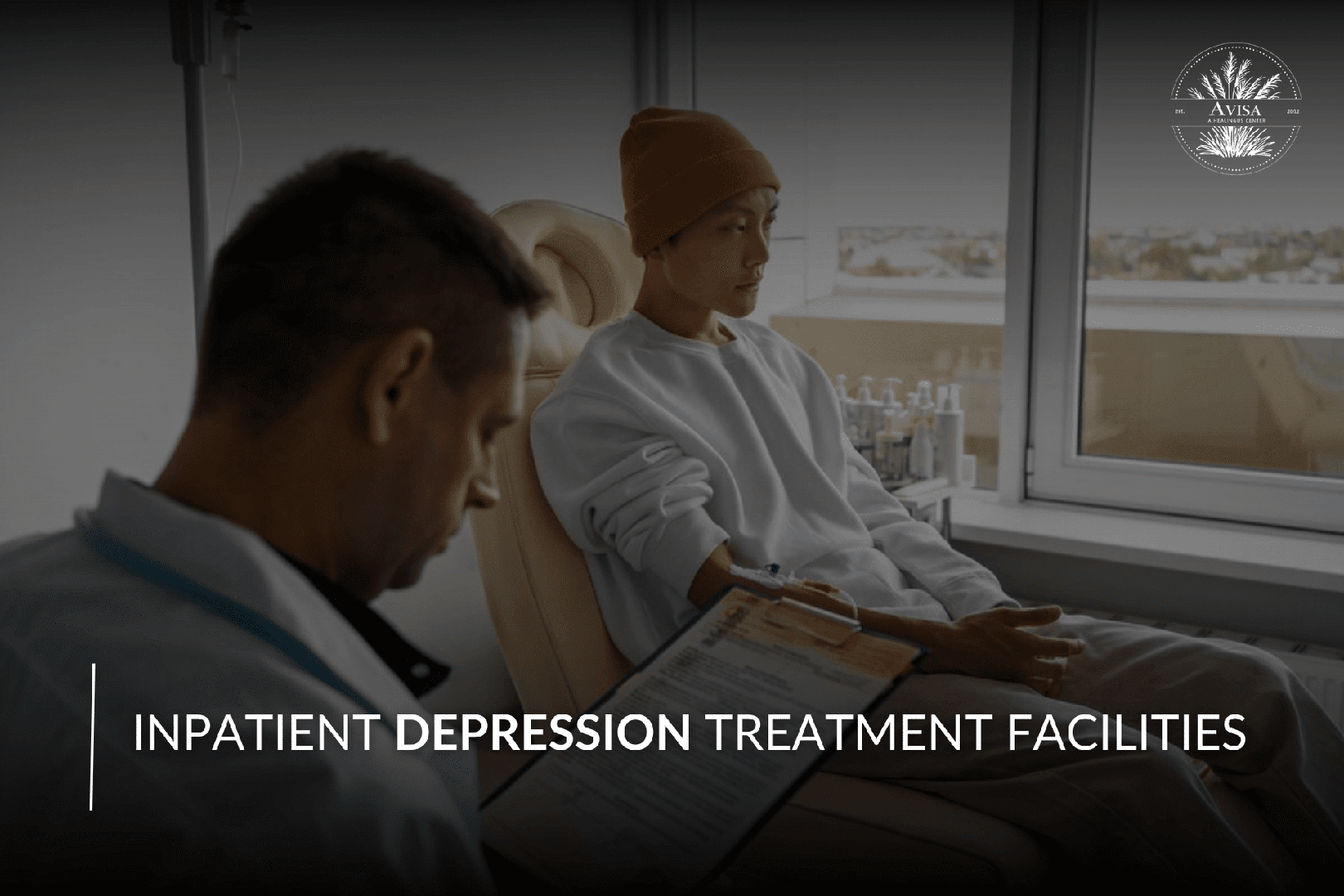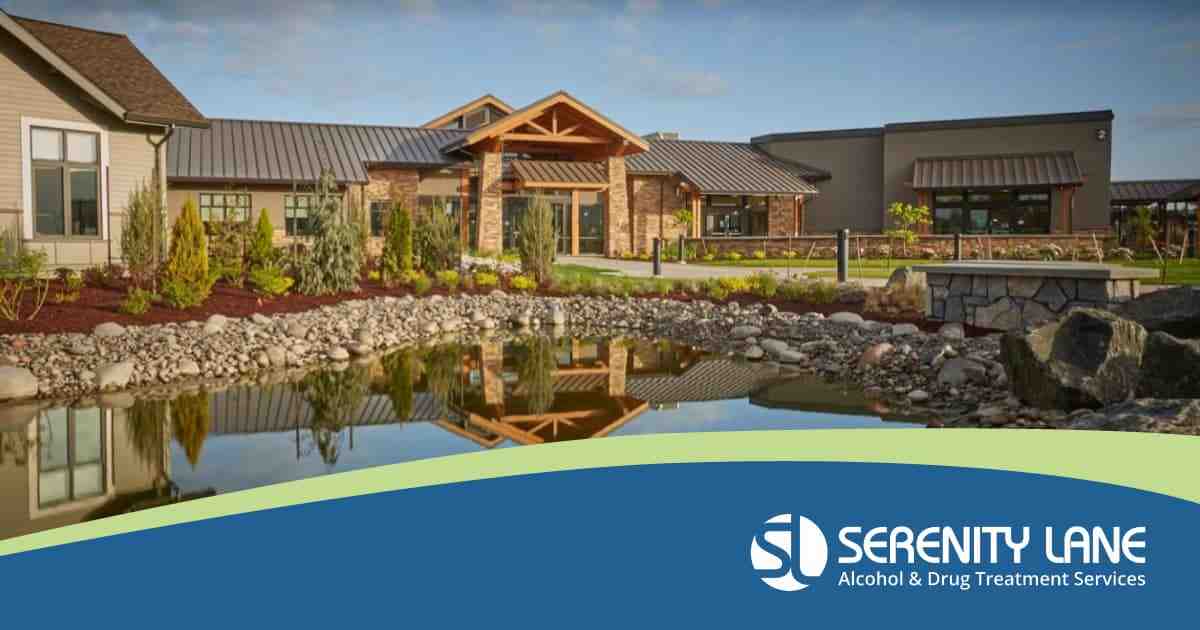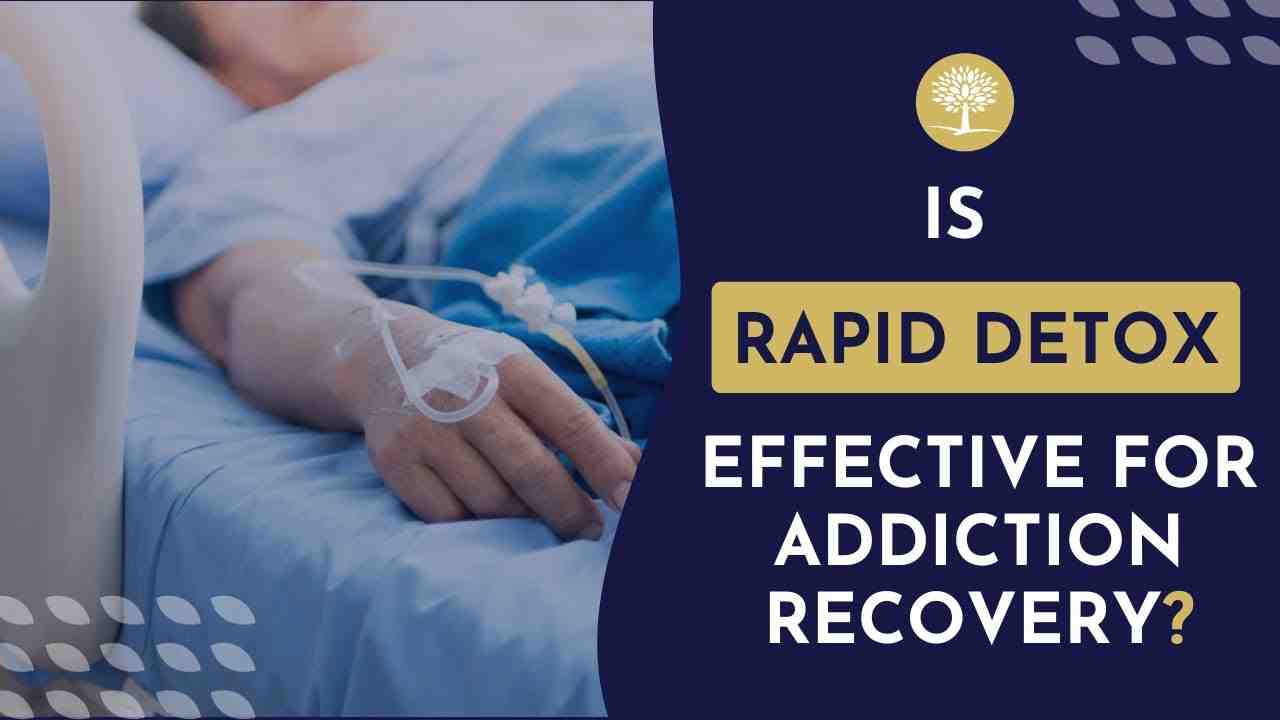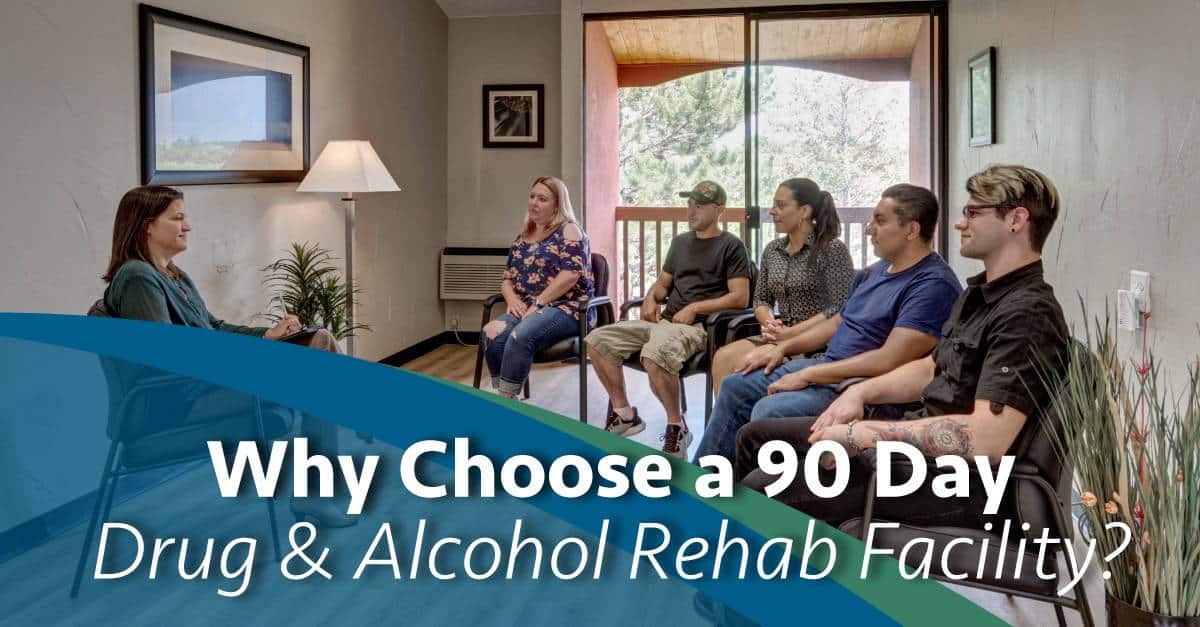
Why 90-Day Inpatient Rehab Programs Offer Hope for Lasting Recovery
90 day inpatient rehab programs near me new are intensive, residential treatment options where individuals live at a facility for about three months, receiving round-the-clock care. These programs combine medical detox, evidence-based therapies, counseling, and aftercare planning to address the root causes of addiction.
What makes a 90-day program different:
- Duration: Three months of intensive, structured treatment (vs. 30 or 60 days)
- Setting: Residential facility with 24/7 medical and emotional support
- Approach: Combines detox, therapy, life skills training, and aftercare planning
- Best for: Severe addiction, history of relapse, co-occurring mental health disorders
- Cost: Ranges from $12,000 to $60,000+, often covered by insurance
If you or a loved one is facing addiction, there’s good news: research consistently shows that treatment stays of 90 days or longer result in significantly better outcomes. Programs lasting at least three months show higher rates of sustained sobriety compared to shorter stays.
A 90-day inpatient program provides the time needed to safely detox, address underlying issues like trauma, develop new coping skills, and build a foundation for long-term sobriety. Unlike shorter programs that focus on stabilization, three-month programs allow for deeper healing and provide the tools to maintain recovery long-term.
At Addiction Helpline America, we guide individuals and families in finding appropriate 90 day inpatient rehab programs near me new. We connect people with accredited facilities nationwide that match their specific needs and insurance. Our addiction specialists offer free, confidential support 24/7 to help you take the first step.
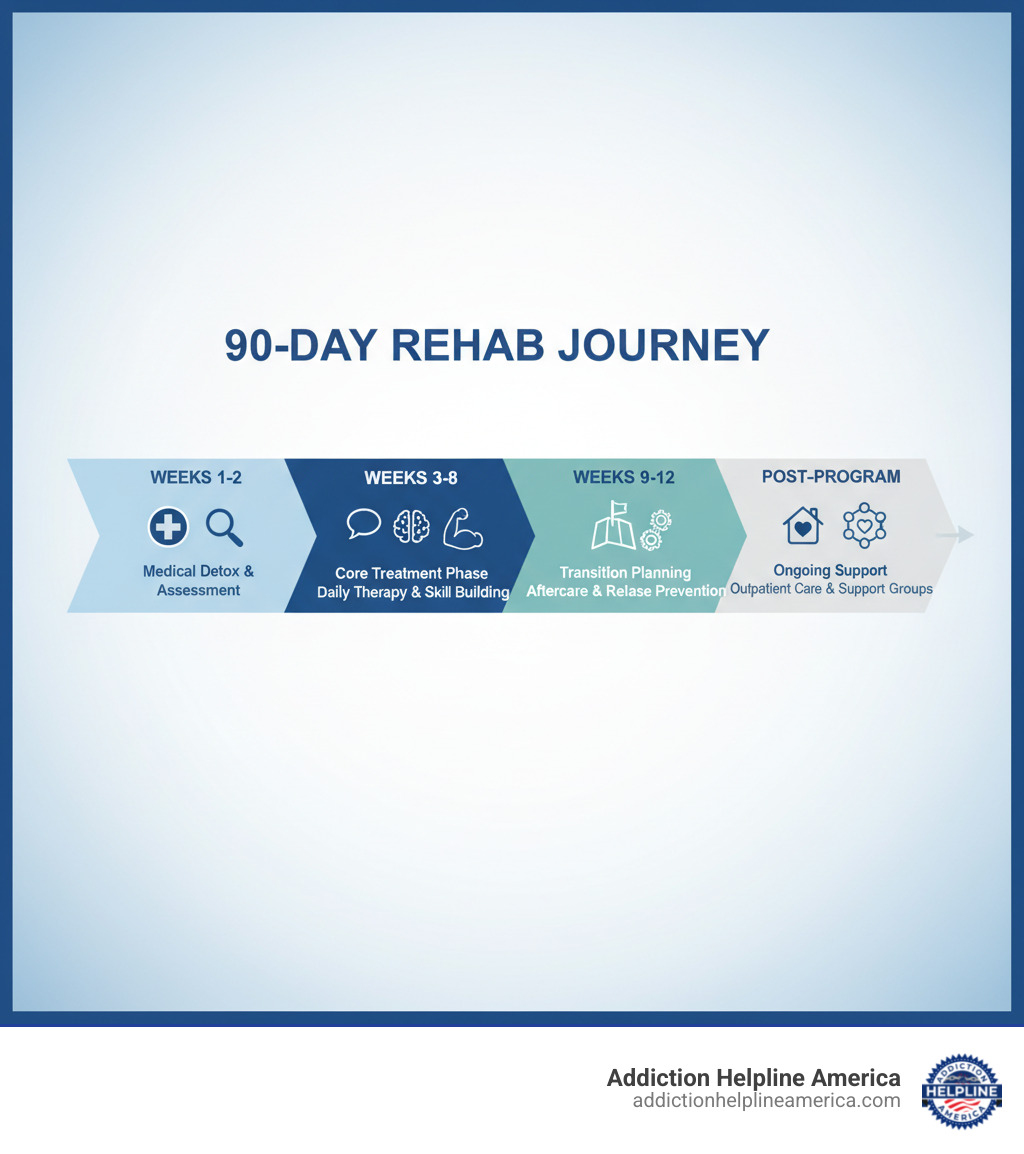
Terms related to 90 day inpatient rehab programs near me new:
Why a 90-Day Program Offers a Stronger Path to Recovery
When facing addiction, 30 days can seem like a long time, but real, lasting change often requires more. 90 day inpatient rehab programs near me new offer something shorter programs can’t—enough time for deeper healing. Think of it like mastering a new skill; it doesn’t happen in a few weeks. A 90-day program provides the space to do more than just stop using substances; it allows you to get to the heart of why the addiction started, whether it was trauma, untreated depression, or other life pressures.

During this extended stay, you build a strong foundation for a new life by developing genuine coping strategies, processing past hurts, and learning who you are without substances in a safe, structured environment.
Research from the National Institute on Drug Abuse confirms this, showing that treatment lasting at least 90 days has significantly higher success rates. Most people need at least three months to stop or reduce drug use, and longer treatment consistently produces the best long-term outcomes.
The Key Differences in Program Length
Choosing the right program length is crucial for your recovery. Here’s a look at what each timeframe can realistically accomplish:
| Feature | 30-Day Rehab | 60-Day Rehab | 90-Day Rehab |
|---|---|---|---|
| Intensity | High, focuses on stabilization & detox. | High, allows more therapy post-detox. | Very high, deep dive into root causes & skills. |
| Focus | Detox, crisis intervention, basic coping skills. | Deeper therapy, some relapse prevention. | Comprehensive healing, extensive relapse prevention, life skills. |
| Ideal Candidate | Mild addiction, first-time treatment, strong support. | Moderate addiction, some co-occurring issues. | Severe addiction, co-occurring disorders, history of relapse. |
| Relapse Prevention Depth | Basic introduction. | Moderate focus on coping mechanisms. | Intensive training, practice, and aftercare planning. |
A 30-day program is often focused on crisis stabilization and detox, while a 60-day program allows for more therapeutic work. However, a 90-day program is where transformative change happens. It provides the time to not just learn new coping skills but to practice them until they become second nature, work through complex trauma, and properly address co-occurring mental health conditions.
Benefits of an Extended Stay
The advantages of a three-month commitment extend to every aspect of your future.
- Reduced Relapse Risk: Spending 90 days building new habits and responses makes them stick. You learn to identify triggers and practice healthy responses in a safe environment before facing the real world.
- More Time for Behavioral Change: Addiction is a chronic disease, and the brain needs time to heal and rewire. Three months allows new, healthy neural pathways to strengthen. Understanding the definition of addiction clarifies why this extended timeline is so vital.
- Stronger Peer Support Network: Living with others in recovery for three months creates deep, lasting bonds. These relationships often become a crucial part of your ongoing support system.
- Comprehensive Treatment for Complex Issues: Many people entering rehab also manage depression, anxiety, or PTSD. Three months gives the clinical team time to properly address these layered issues through integrated treatment, ensuring nothing is rushed.
If you’re wondering if you need this level of care, Addiction Helpline America can help. We’ve guided thousands in finding the right 90 day inpatient rehab programs near me new. We’re available 24/7 to answer questions and help you take the first step toward lasting recovery.
The 90-Day Journey: What to Expect from Intake to Aftercare
Choosing 90 day inpatient rehab programs near me new means choosing to rebuild your life in a structured, therapeutic community. Every day is designed to support your healing. The effectiveness of these programs lies in the structured environment with 24/7 care, providing medical supervision and emotional support while removing the chaos and triggers of daily life. This safe space allows you to focus entirely on recovery.

A 90-day program is long enough to transform, not just stabilize. You’ll move through distinct phases, each building on the last. Our guide to stopping drug addiction offers more insight into this journey.
Phase 1: Intake and Medically-Supervised Detox
Your journey begins with intake, where a compassionate team conducts an assessment to understand your medical history, substance use, and mental health concerns. This information is used to create a personalized treatment plan. If you are physically dependent on substances, the next step is medically-supervised detoxification. With 24/7 medical care, professionals ensure your safety and comfort, managing withdrawal symptoms that can be uncomfortable or even dangerous. This phase clears substances from your system and prepares you for the therapeutic work ahead. Medication Assisted Treatment can be a key support during this time.
Phase 2: Core Therapies and Daily Structure
Once you’re stable, the heart of recovery begins. Your days will be structured, balancing intensive therapy with time for reflection and connection.
- Evidence-Based Therapies: You’ll engage in therapies like Cognitive Behavioral Therapy (CBT) to change negative thought patterns and Dialectical Behavior Therapy (DBT) to learn skills for managing emotions and distress.
- Group and Family Counseling: Group therapy provides a powerful connection with peers who understand your struggle. Family counseling helps repair relationships and teaches healthier communication.
- Holistic and Life Skills Training: Many programs include holistic therapies like yoga, meditation, or art therapy to help you reconnect with yourself. Life skills training covers practical needs like financial management and stress reduction.
For those with co-occurring mental health disorders like depression or anxiety, 90 day inpatient rehab programs near me new provide integrated dual diagnosis treatment. This comprehensive approach addresses both addiction and mental health simultaneously, which is critical for preventing relapse.
Phase 3: Aftercare Planning and Transition
As you near the end of your 90 days, the focus shifts to preparing for life after treatment. This phase is crucial for long-term success.
Your team will help you create a detailed relapse prevention plan, identifying your triggers and outlining specific coping strategies. You’ll be connected with ongoing support groups like Alcoholics Anonymous (AA) or Narcotics Anonymous (NA) to build a community that extends beyond the treatment center.
For those needing a gradual transition, options like sober living homes offer a structured, substance-free environment. Outpatient therapy (IOP or PHP) provides a bridge between inpatient care and independent living. The goal is to build a long-term support system. For more strategies, explore our tips for staying sober.
How to Find New 90-Day Inpatient Rehab Programs Near Me
Finding the right 90 day inpatient rehab programs near me new can feel daunting, but you don’t have to do it alone. When evaluating programs, there are a few key things to look for.

First, verify accreditation from organizations like The Joint Commission or CARF, which indicates a facility meets high safety and quality standards. Reading reviews from former patients can provide insight into daily life at the facility. Also, consider location—some people prefer to be close to family, while others benefit from a new environment away from triggers.
At Addiction Helpline America, we know these programs inside and out and can help you find options that match your needs and insurance. Our complete guide to finding a rehab facility offers more detail on this process.
Signs You or a Loved One May Need a 90-Day Program
Certain situations strongly indicate that the extended support of a three-month program is necessary:
- Severe Addiction History: Years of heavy use or addiction to multiple substances requires more time to address complex behavioral patterns.
- Previous Relapse: If shorter programs haven’t led to lasting sobriety, it’s a sign that a longer duration is needed to build a stronger foundation.
- Co-occurring Mental Health Disorders: Conditions like depression, anxiety, or PTSD complicate recovery and require an extended timeframe for integrated treatment.
- Unstable Home Environment: A home with active substance use or instability makes recovery difficult. A 90-day program provides a safe, protective space to heal.
- Need for Intensive Structure: If you thrive with clear routines and 24/7 support, the framework of a 90-day inpatient program is ideal. For more guidance, see our information on professional help.
Steps to Finding Reputable New 90-Day Inpatient Rehab Programs Near Me
Here are practical steps you can take to find a quality treatment program:
- Use Online Directories: Search for terms like “90 day inpatient rehab programs near me new.” Filter results by program length, insurance, and services, but be aware that some listings are paid placements.
- Consult Medical Professionals: Your doctor or therapist can be an invaluable resource, often providing referrals to trusted treatment centers.
- Call a Confidential Helpline: Helplines like Addiction Helpline America exist to simplify this process. Our team has personal knowledge of facilities nationwide and can provide free, unbiased guidance.
- Verify Licenses and Accreditations: Independently confirm a facility’s state license and accreditation through the websites of organizations like The Joint Commission or CARF.
- Assess Treatment Approaches: Ensure the program offers evidence-based therapies (CBT, DBT), can handle dual diagnosis cases, and has a clear philosophy on aftercare planning. The right program equips you with tools for lifelong recovery.
Understanding the Costs and Payment Options for Treatment
Thinking about the cost of 90 day inpatient rehab programs near me new can be stressful, but they are more accessible than you might think. While the price for a 90-day program can range from $12,000 to over $60,000, several factors influence the final cost, and numerous payment options are available.
- Location: Facilities in areas with a higher cost of living are typically more expensive. For example, the average cost in Tennessee is around $56,600, but specific programs may be less.
- Amenities: A luxury rehab program with private rooms and spa services will cost more than a standard facility.
- Level of Care: Programs with specialized therapies, dual diagnosis treatment, or a high staff-to-patient ratio often have higher costs. General statistics on the cost of rehab show that 60-to-90-day programs average around $36,000.
Many centers offer sliding scale fees based on income or financing options like payment plans to make treatment more affordable.
Using Insurance to Cover Treatment
Thanks to federal laws like the ACA and MHPAEA, most health insurance plans must cover behavioral health. This means your insurance can significantly reduce the out-of-pocket cost for 90 day inpatient rehab programs near me new.
Most rehab centers accept private insurance. The first step is to verify your benefits to understand what your plan covers, including deductibles, copays, and whether a facility is in-network or out-of-network. In-network facilities are generally less expensive. Our team can help you understand your specific coverage instantly. For more details, visit our insurance guide or our page on Alcohol Treatment Centers That Accept Aetna.
Government-Funded and Veteran-Specific Options
If you lack private insurance, government-funded programs can help.
- Medicaid and Medicare: Medicaid provides coverage for low-income individuals, and many rehabs accept it. Medicare covers treatment for those 65 or older and some younger people with disabilities. Part A covers inpatient care.
- VA Benefits: The Department of Veterans Affairs (VA) provides extensive treatment options through its facilities and the Community Care Network (CCN), which funds care at community providers. Seeking help is confidential and won’t affect other benefits. Our complete guide to veterans addiction treatment offers more information.
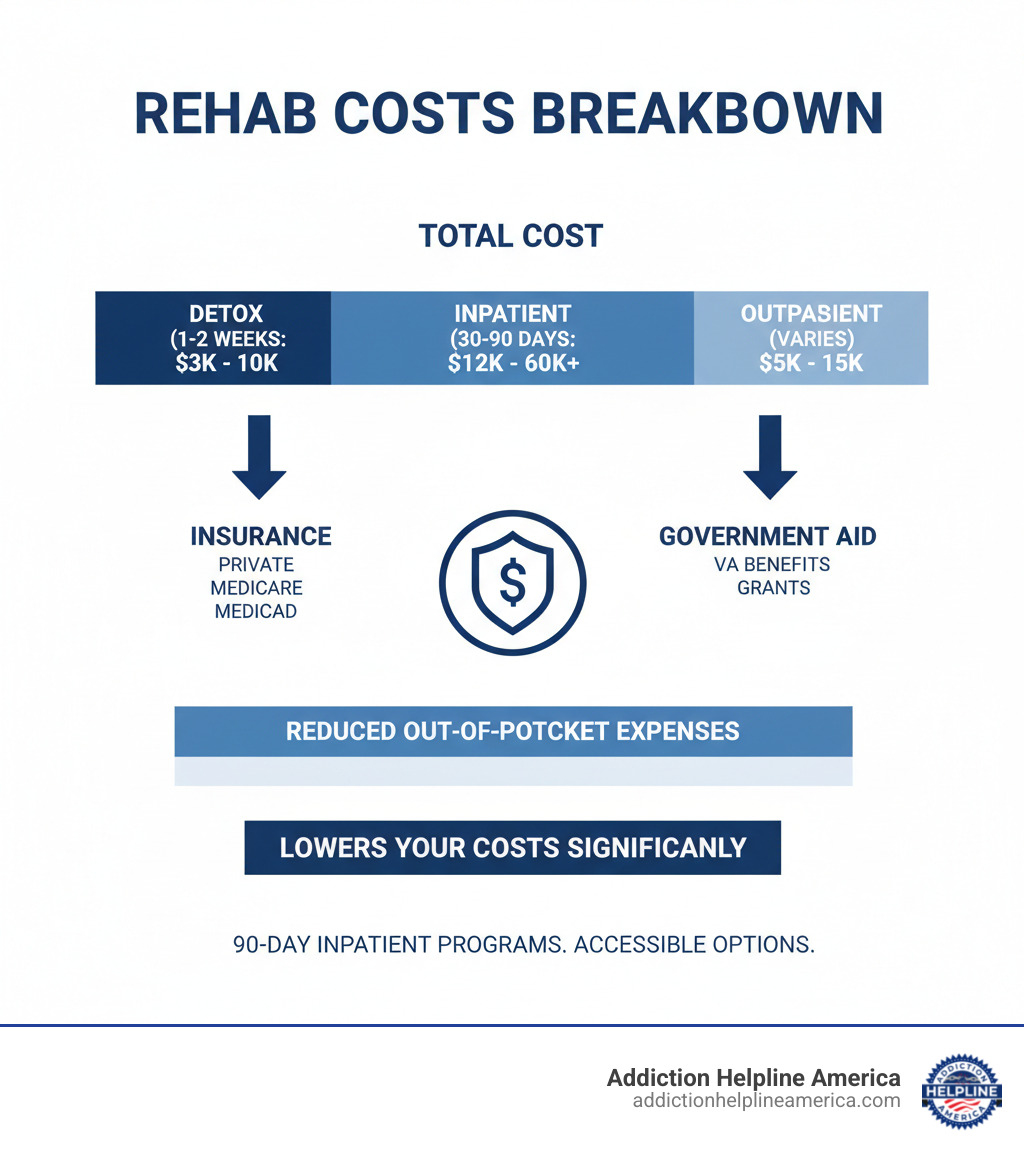
Frequently Asked Questions
When considering 90 day inpatient rehab programs near me new, it’s normal to have questions. Here are answers to some of the most common inquiries we receive.
What are the success rates for 90-day rehab programs?
Research from the National Institute on Drug Abuse (NIDA) shows that programs lasting 90 days or longer have significantly higher rates of sustained sobriety compared to shorter stays. While no program can guarantee success, as recovery is a personal journey, the extended time in a 90-day program gives you the best possible chance. Success is measured by long-term outcomes like sustained sobriety, improved health, and better quality of life. The need is great, as data from SAMHSA shows millions struggle with substance use disorders.
How are co-occurring mental health disorders handled?
It’s very common for addiction to co-occur with mental health conditions like depression, anxiety, or PTSD (a “dual diagnosis”). Reputable 90 day inpatient rehab programs near me new are designed to treat both conditions simultaneously through an integrated approach. A team of specialists provides individual and group therapy for both issues, along with psychiatric care and medication management if needed. Treating both conditions at once provides a much stronger foundation for lasting recovery.
What does a typical daily schedule look like?
A structured daily routine is a core component of inpatient rehab. It removes the chaos of addiction and helps build healthy habits. A typical day includes:
- Morning: Wake-up, breakfast, and a centering activity like meditation, followed by group therapy sessions or educational workshops.
- Afternoon: Lunch, followed by individual counseling, specialized therapy (like CBT or DBT), and recreational activities such as fitness or art therapy.
- Evening: Dinner, followed by 12-step meetings (AA/NA) or process groups, with personal time for reflection before bed.
This predictable schedule provides stability and teaches time management skills that are crucial for life after treatment.
Take the First Step Towards a New Beginning
Choosing to seek help for addiction is a courageous decision. If you’re exploring 90 day inpatient rehab programs near me new, you’ve already taken an important step. You don’t have to steer this process alone.
At Addiction Helpline America, we simplify the process of finding the right treatment. We offer free, confidential, and personalized guidance, whether you’re seeking help for yourself or a loved one. Lasting recovery is possible, and we’ve seen thousands of people rebuild their lives.

We connect you with accredited centers nationwide that match your specific needs, insurance, and location preferences. Our addiction specialists are available 24/7 to answer questions, verify your insurance, and help you take the first step without judgment. Don’t let confusion or fear hold you back. Your new beginning starts with a single call or message. To see the full range of options, visit our guide to types of treatment programs and find the right path for you.
Our helpline is 100%
free & confidential
If you or someone you care about is struggling with drug or alcohol addiction, we can help you explore your recovery options. Don’t face this challenge alone—seek support from us.
Programs
Resources
Will my insurance
cover addiction
treatment?
We're ready to help
Find the best
drug or alcohol treatment
center
Are you or a loved one struggling with addiction? Call today to speak to a treatment expert.

